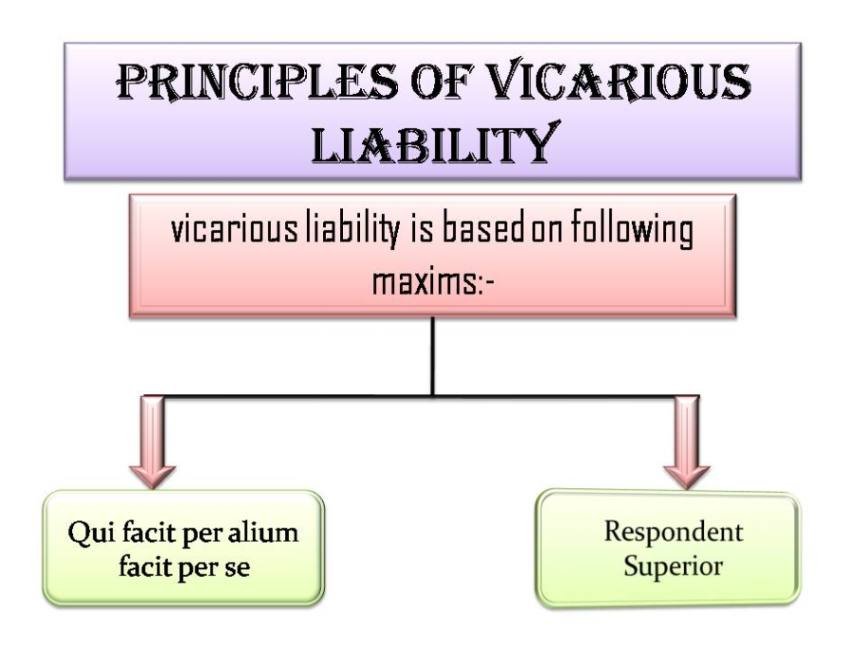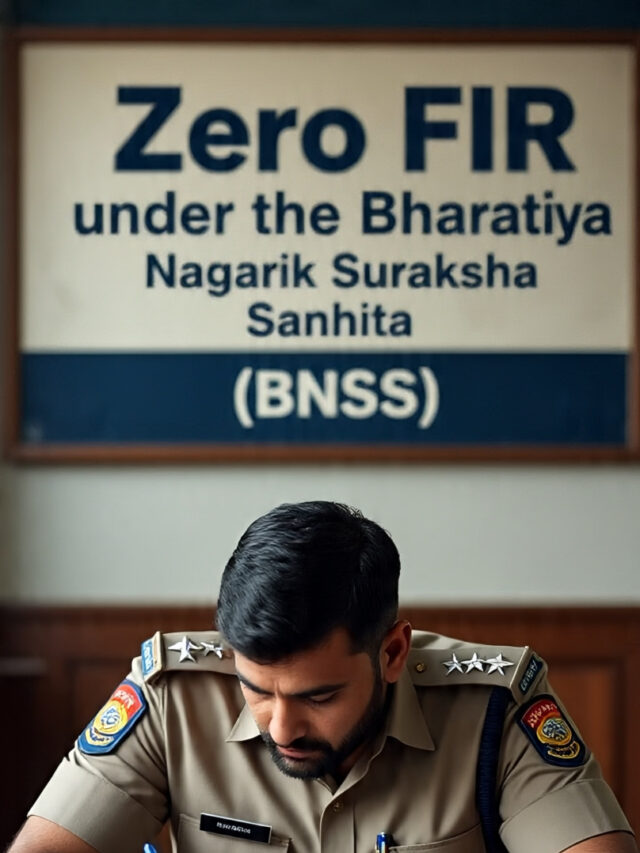Introduction: Vicarious Liability is a legal word that refers to a circumstance where someone else is responsible for someone else’s actions. An individual is responsible for his or her personal misdoings, but maybe not for the misdoings of others, generally. In some cases, however, vicarious liability, or the obligation of one individual for the activities of another, may occur.
For instance, for A to be held responsible for acts done by B, there has to be some sort of connection between A & B, and the wrongdoing must be connected to that relationship in some manner.
Obligation and Liability
Examples of such an obligation and liability
- The principal’s liability for the torts of his agents;
- Partners’ liability for each other’s torts;
- Masters’ liability for the torts of his servants is all common example of such an obligation and liability.
vicarious responsibility describes instances in which one group and individuals combine liable for another’s acts. In the area of Torts, it is acknowledged as an exception to the core rule that an individual is exclusively responsible for his own conduct. Both the individual who directs the behavior and the individual who carries it out are held responsible in a case of vicarious liability. As a consequence, employers are held legally liable for their workers’ damages incurred while on employment.
Master’s Vicarious Liability for Servant’s Torts
In a Master-Servant relationship, the master employs the servant’s services and he works under his orders, creating a unique relationship between the two. If the servant commits a tort, his master is also held legally responsible.
In many cases, when a servant performs an act for his master, it is deemed that the master is performing the act himself. As a result, if the servant commits an illegal act, the master would be held legally responsible as well.
The master’s liability is developed on the basis of 2 legal maxims.

1. Qui facit per alium facit per se: – It means whenever a person has something done for them by someone else, they are considered to be performing the act themselves.
2. Respondent Superior: – This denotes that the master/superior is fully responsible for his subordinate’s actions.
The above 2 maxims have had a considerable impact on the development of the master’s vicarious liability law.
The Importance of Vicarious Liability in the Master-Servant Relationship For the vicarious liability of the master to arise, the following key requirements must be fulfilled: –
- The servant has violated the law that constitutes a tort.
- Such a wrongful act is committed by the servant while working for the master.
Reasons for the Master’s Liability
There are many factors for holding the master responsible & liable for his servants’ actions, which include:-
- A servant’s act is deemed to be done by the master through him, it is implied in tort law that any mistake executed by the servant has been done indirectly by his master, and therefore the master is held responsible for all wrongful conduct.
- In comparison to his servant, the master is in a better position financially, so in the event of loss or damage caused by the servant’s tortious act, the master is probably more suited to pay the damages to the plaintiff of the act. Furthermore, because the master is legally responsible, he ensures that all reasonable precautions and safety measures are taken in order to avoid liability.
- When a servant performs any act, the profit from such act is enjoyed by the master, therefore the obligation emerging from the servant’s act must be borne by the master as well.
Test for determining Master-Servant relationship
Specific tests have evolved over the course of time to determine a Master-Servant relationship.
Control Test (Traditional View)
This test determines whether the master has the power to not only instruct what should be done but also the manner in which it should be done, and if such power exists, the master and servant relationship exists between the two.
Perspective from Modern View
The Control Test
The old Control test is no longer relevant as an exhaustive test in situations where work requires skill, such as a doctor working in a hospital, where the hospital owner cannot direct the physician on how and where to treat a patient and can only instruct him to treat a patient. As a result, additional tests to ascertain the Master-Servant Correlation have been developed.
Work as an essential part of business was put to the test
The test of an integral part of the organization was applied in the case of Stevenson Jordan & Harrison Ltd. V Macdonald & Evans (1952) 1 TLR 101. A contract of employment was held to be a contract for work that is an important aspect of the business in this case, while a contract for service has been held to be a contract for work that is not important for the business.
Multiple Test
Individuals who are under a service contract are considered employees, while those who are under a contract for service are considered independent contractors, according to this test.
In Ready Mixed Concrete(R.M.C) v Minister of Pensions & National Insurance (1968) established three requirements for a service contract.
- The servant tends to agree to provide his abilities & work to the master in exchange for monetary or some other consideration;
- He tends to agree to be accustomed to such an amount of responsibility that the person becomes his master in the efficiency of his employment; and
- Some other clauses of the contract are coherent with this requirement of being a service contract. difference between Servant and Independent contractor
A contract of service exists in the case of a servant, it implies that in addition to directing how much work the servant could perhaps perform, the master even has the authority to persuade how the act should really be performed, and thus the servant.
In the specific instance of an independent contractor, there is a contract for service, it implies that he could only be advised what should have been done, but how the task is done is up to him, and that he does not follow the master’s directions.
Master’s Liability can arise in a Variety of Ways
In the following circumstances, a master will become legally responsible:
Act or omission done as a natural result of a Servant’s careful act for the Master.
If an employee acts in accordance with the master’s instructions, the master will be held legally responsible for any harm that results from that act, even if the employee takes all reasonable precautions in carrying out his duties.
Wrong as a result of a worker’s negligence
A master is also legally responsible for a servant’s act that he performs negligently or without due care.
Excessive or Erroneous execution of a Legal Authority
To hold the master liable in such a case, it must be demonstrated that: –
- The servant intended to perform an act on behalf of his master that he was authorized to perform; and
- The act would’ve been lawful if performed in the situations that perhaps the servant wrongly assumed were true, or if the act would’ve been legal if properly performed.
Wrong done intentionally by a servant with the intended meaning of enhancing the master’s goals.
If a servant acts intentionally, carelessly, or inadequately in the course of his or her employment, the master will be held legally responsible for any harm resulting from that act.
Wrong by Servant’s Fraudulent Act
A master could also be held legally responsible for the servant’s dishonesty.
In Lloyd v. Grace Smith & Co. (1912)the plaintiff was a widow who owed £ 1000 dues on a mortgage & purchased a cottage. She went to the defendant’s supervisor, a company of legal counsel, & requested for his help in getting richer. The supervisor advised woman to sell her cottage & call up the mortgage payment. She gave the supervisor permission to sell the house and collect her money, but he absconded with the money. As a consequence, she filed a lawsuit against the defendant corporation. The defendant was liable for the manager’s fraudulent act because, while it was not authorized, the supervisor was authorized to take her signature and therefore it was in the course of the employment.
Conclusion
The purpose of the vicarious liability concept is to compensate the injured party by the real party who is responsible for the damage. Companies are held responsible for the crimes perpetrated by their employees during the course of the employment.
Read more: –
Define Torts and its essential elements law of torts
The doctrine of Volenti non-fit Injuria case and exception
Frequently Asked Questions
What are some common instances of vicarious liability?
The employer-employee relationship is arguably the most widespread case of vicarious liability. Respondent superior is the term used to describe this situation. If an employee’s illegal behaviour takes place while the employee is performing his or her job, the employer is held legally responsible.
What are the three factors that contribute to vicarious liability?
The Essential key Elements:
1. Defendant employed a negligent person.
2. The negligent individual was functioning within the scope of his or her employment, or
3. The employer gave the employee permission to act in a tortious manner, or the employer afterwards ratification the employee’s wrongful act actions. The value of the actual monetary damages.
What are the vicarious liability exceptions?
Partners’ liability for each other’s wrongdoing; master’s liability for his servant’s wrongdoing. As an outcome, vicarious liability refers to instances wherein one person is considered liable for another’s negligence. It is taken into account an exception to the general principle that an individual is only responsible for his own actions in the field of Torts.
What is the vicarious liability multiple tests?
In any situation of vicarious liability, there is a three-part test to determine liability:
1. An act or omission or offence was perpetrated,
2. The tort or offence was committed by an employee, and
3. The tort or offence was committed while the employee was employed.

























